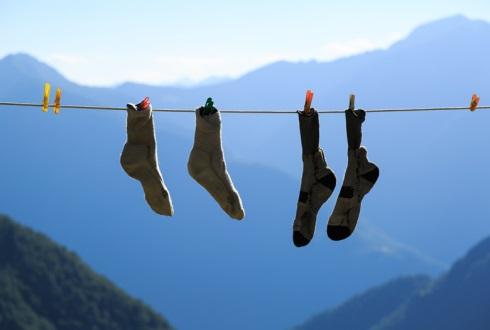For fans of nature and exercise in the fresh air, hiking brings the best of both worlds. This recreational activity involves walking along beaten paths through the countryside, hills, and mountains, and it’s fun and relaxing. Plus, it improves your fitness, especially if you have a sedentary occupation, and can benefit your overall health.
You can find more about the benefits of this outdoor activity at the link below:
https://bearfoottheory.com/benefits-of-hiking/
Another great thing about hiking is its economy. It doesn’t require excellent physical fitness or special equipment. You need good-quality footwear, comfortable clothes, a backpack for food, necessities, and gadgets, and possibly walking poles if you plan to hike on steep terrain.
The quality of shoes and socks is critical because it can make or break your hiking experience. While walking, your feet suffer a lot of pressure and absorb impact, so you have to provide them with maximum comfort. Besides the already mentioned footwear, great attention should be paid to the choice of hiking socks, and there are several factors to consider before purchasing.
Material
Quality hiking footwear should provide good support to the foot while overcoming different terrains. You should tie laces quite tightly to keep your foot in the desired position. However, it means that your feet will not be able to breathe, and they’ll swat a lot.
That’s where hiking socks come in. The best materials are those that allow your skin to breathe, that is, those made of natural fibers. Perhaps the first thing that comes to your mind is cotton, but it’s not the best solution for highly-intensive activities, primarily because of its absorption properties, which make this material dry slowly.
The choice should be silk, wool, or synthetic. Overall, the best option is wool because it absorbs moisture poorly, has antibacterial properties, keeps your feet warm during cold days, and provides pleasant cooling when temperatures are high. But it’s by far the most expensive option. Silk will also keep your feet dry, but these socks aren’t very durable, so use them only for short hikes and less demanding terrains.
Synthetics combine all the good features of the mentioned materials and cost less than both. It’s an excellent insulator that preserves the natural heat of your feet, preventing external factors such as moisture from triggering increased sweating. There are several synthetic materials to choose from, but it’s best to wear a combination that creates a good fit and arch support while keeping your feet dry and cozy.
Thickness
The sock thickness determines how comfortable it is on your foot and how much cushioning it provides. In general, thicker models are preferable for deeper footwear, such as trekking shoes or hiking boots, long tours, and colder days. They not only warm your feet but also provide heavy cushioning for increased comfort.
If you don’t want heavy padding on your feet, you can opt for medium-weight socks. They are thinner but still thick enough to trap heat in moderate to cold weather. In case you prefer hiking during warmer days, your choice should be lightweight or even ultra-lightweight stockings. Both are great for warm conditions but lack cushioning, so make sure you have extra foot support, like sock liners. These prevent blisters and absorb sweat fast, and if you wear them under thick socks, they extend their life span. On this page, learn how to take care of your hiking stocking.
Fit and Height
When choosing hiking socks, pay attention to their size and fit. Properly-sized stockings have both the toes and the heel fit in the right place. Seams should be flat, and loops shouldn’t be too dense to ensure prolonged cushioning and sweat absorption.
The best hiking socks fit snugly and are elastic enough to stay firmly on your legs. They shouldn’t be loose or too tight because that can significantly reduce comfort while walking.
As for the hiking sock height, it depends on the type of hiking footwear. You can choose anywhere between ankle and over-the-calf height. Short models fit low-cut shoes and provide minimum protection, so wear them only for short hikes. Ankle-height socks are the best option for low- to mid-cut shoes.
The most common choice of hikers is crew socks, whose height is a few inches above the ankle. Their edges go over the boot collars to prevent friction and discomfort when walking. As long socks cover your legs knee-height, they provide enough warmth to your feet, making them an excellent choice for hiking over glaciers and snow.
When choosing hiking socks, always keep these factors in mind. You need a good quality and durable stocking that provides the most comfort and breathability. Take some time to research your options and find the best fit for your feet to ensure the best hiking experience.


